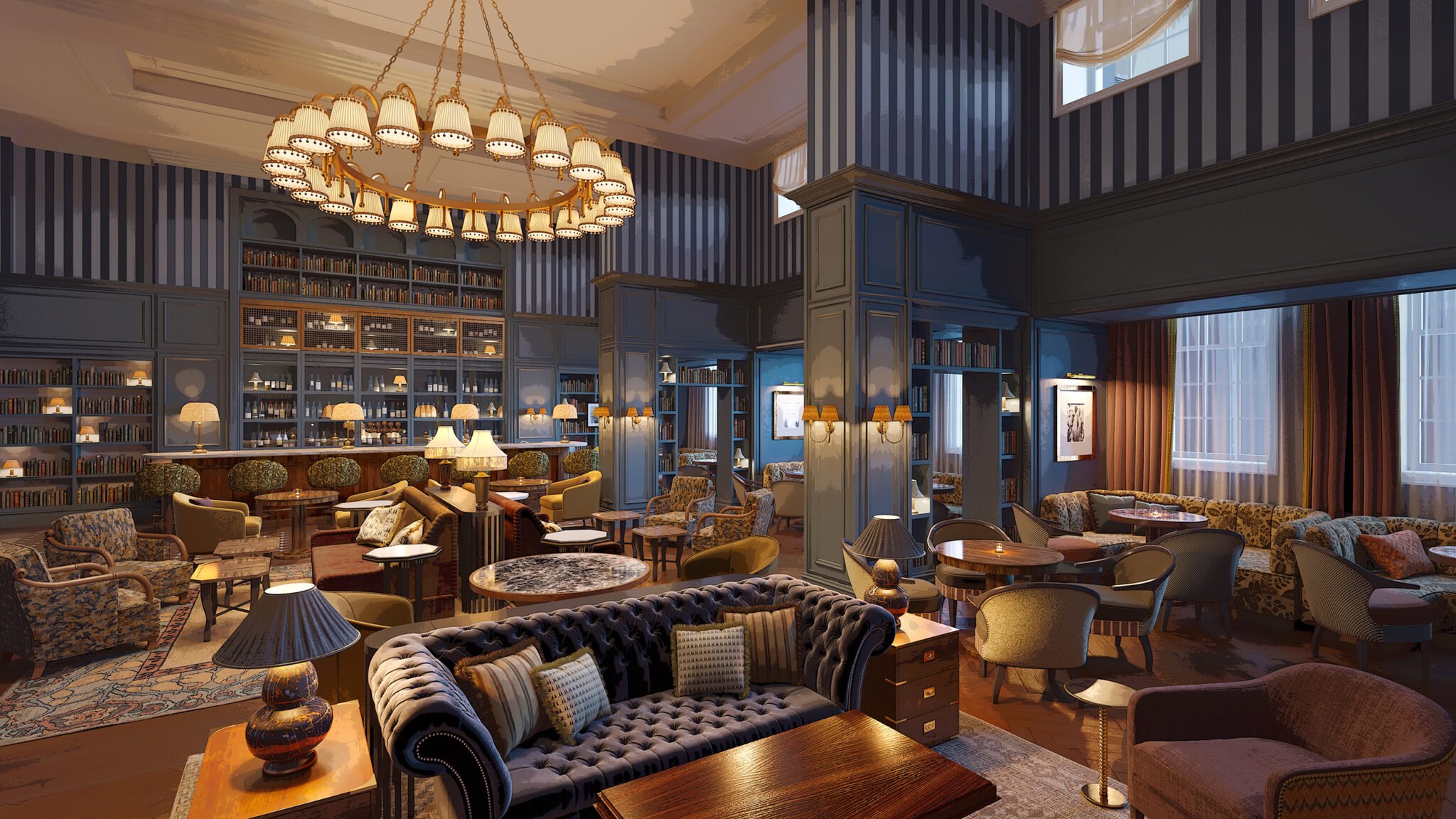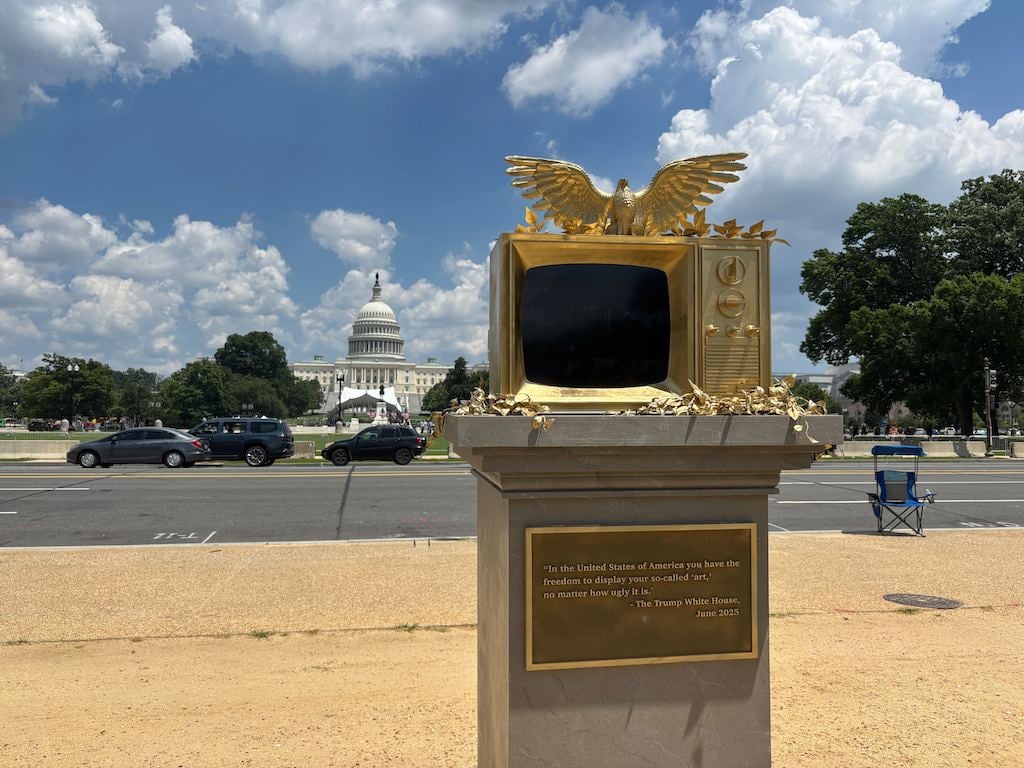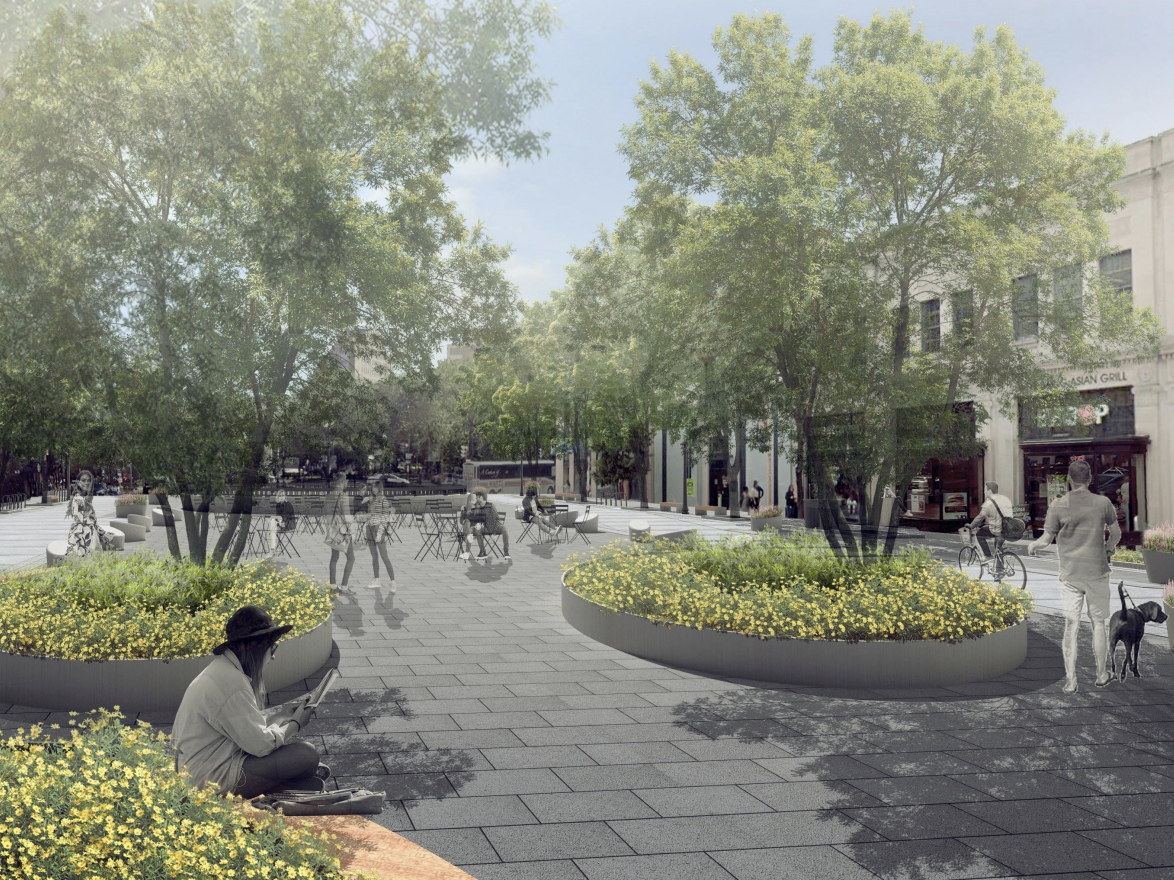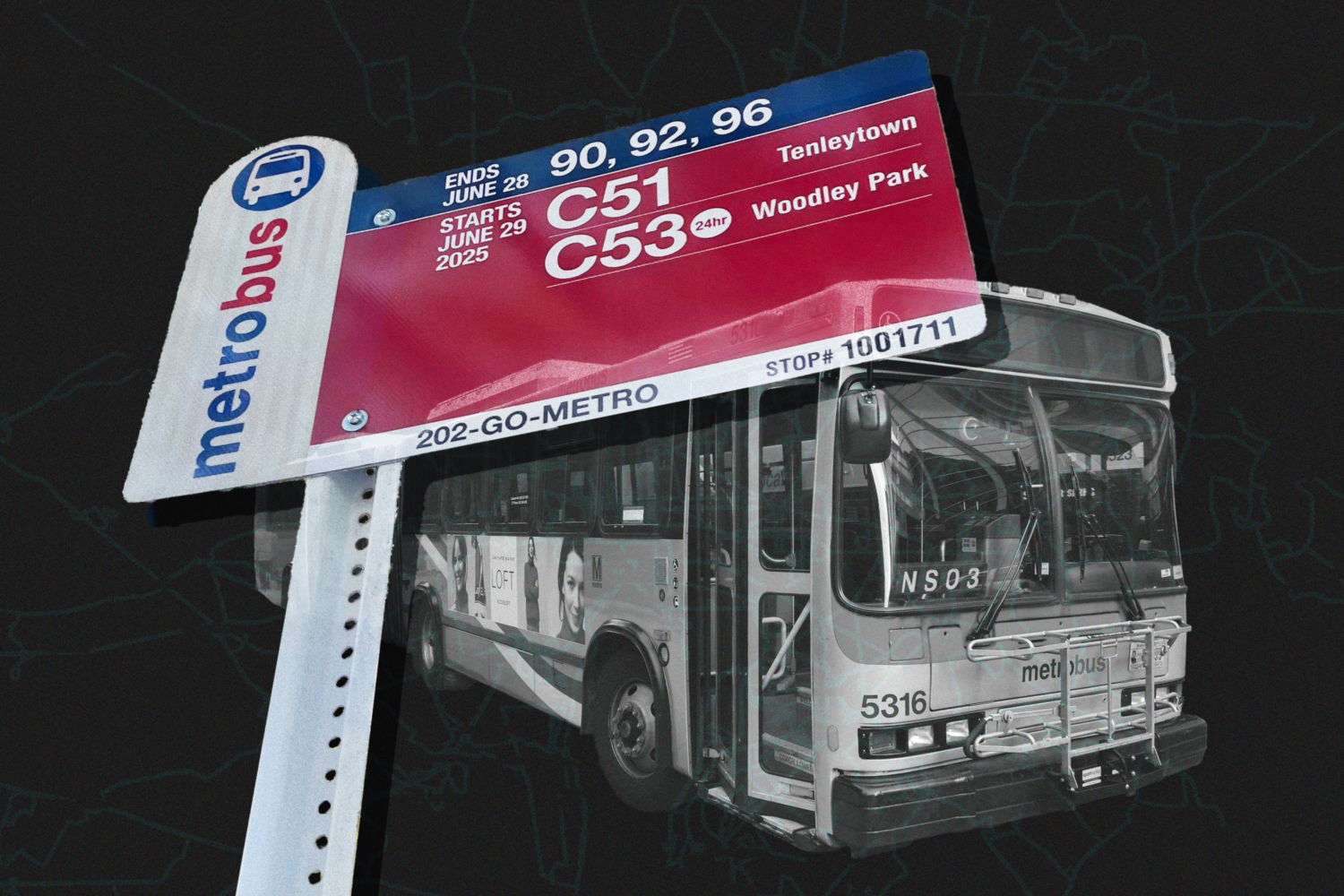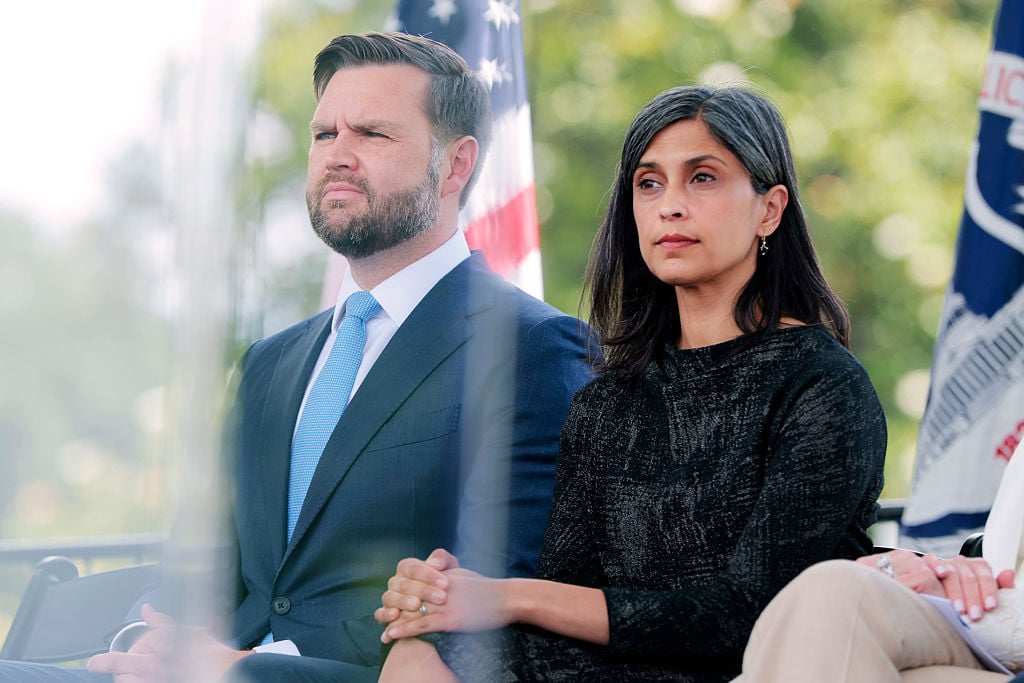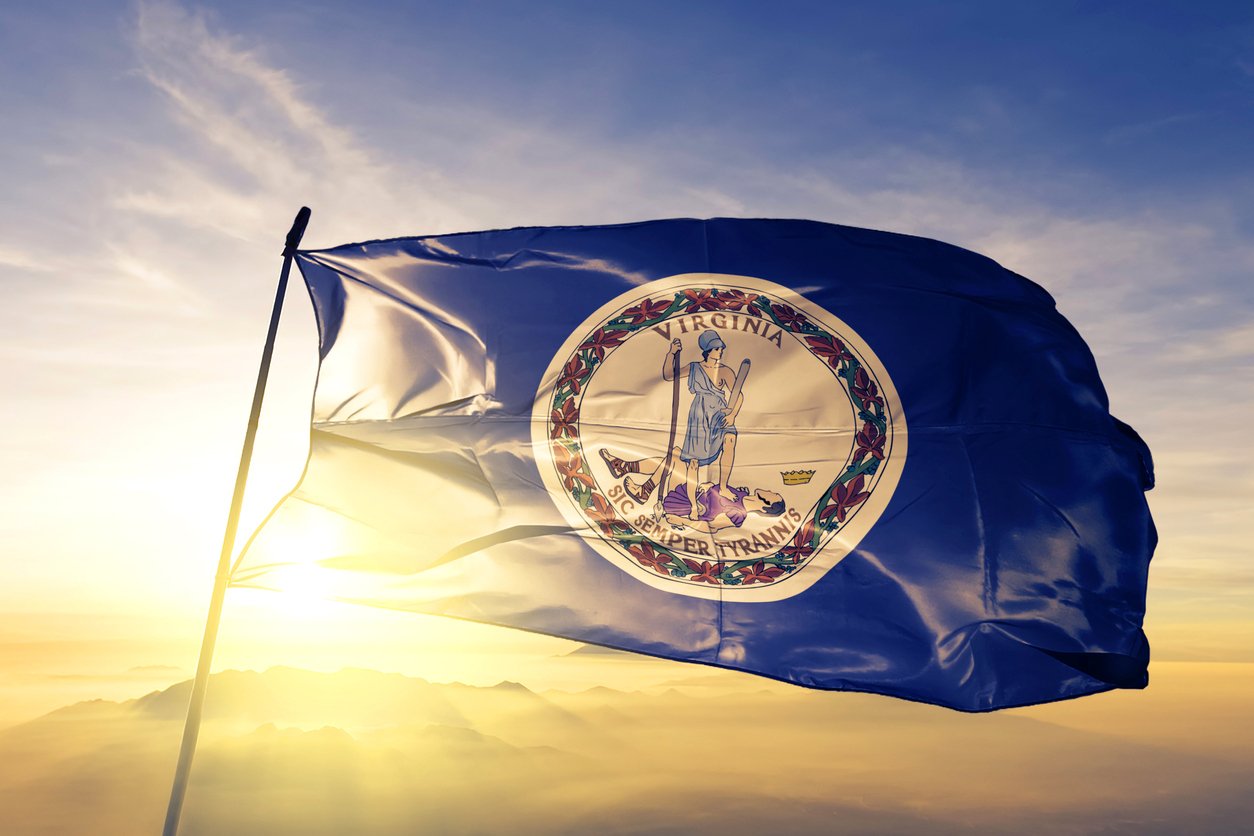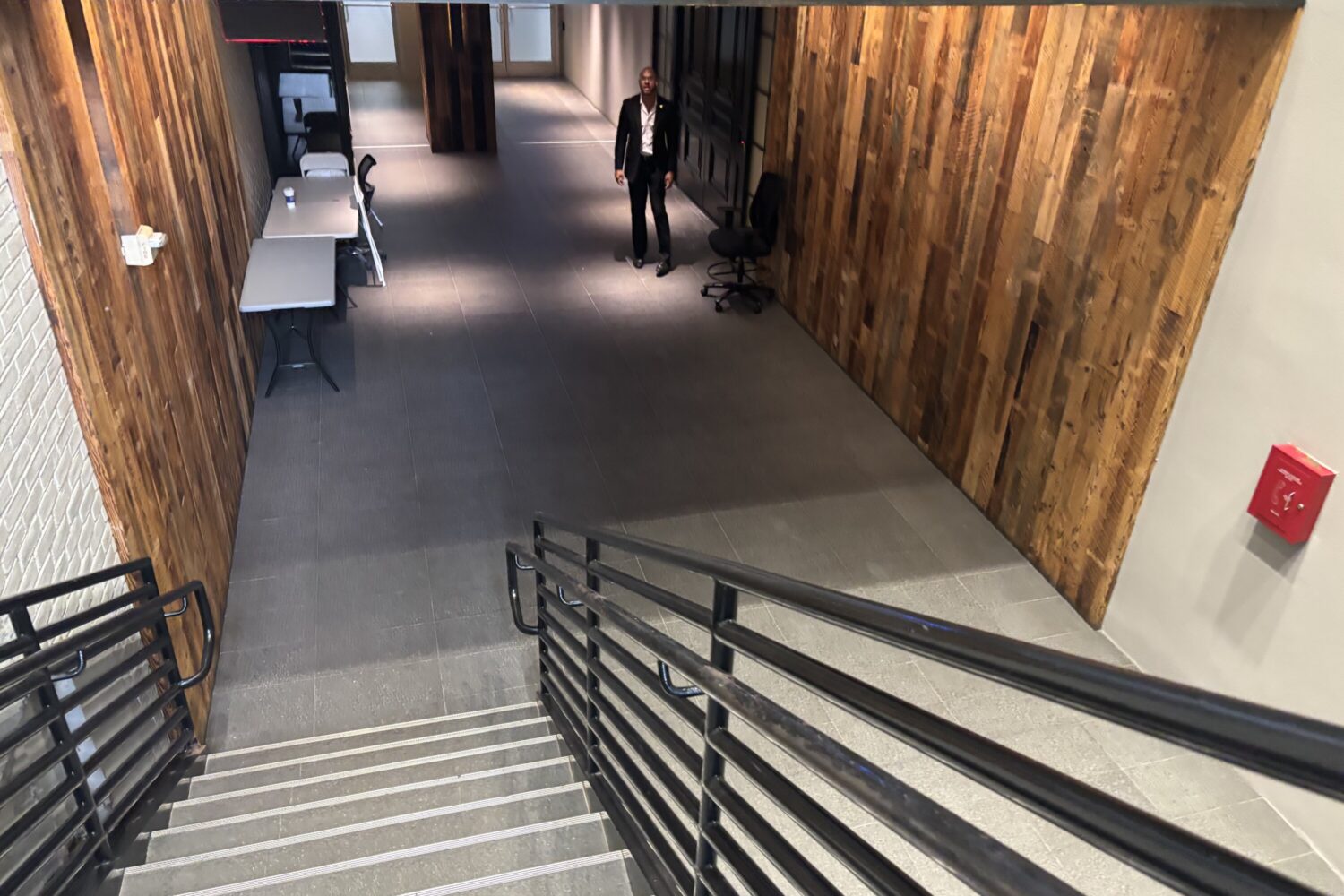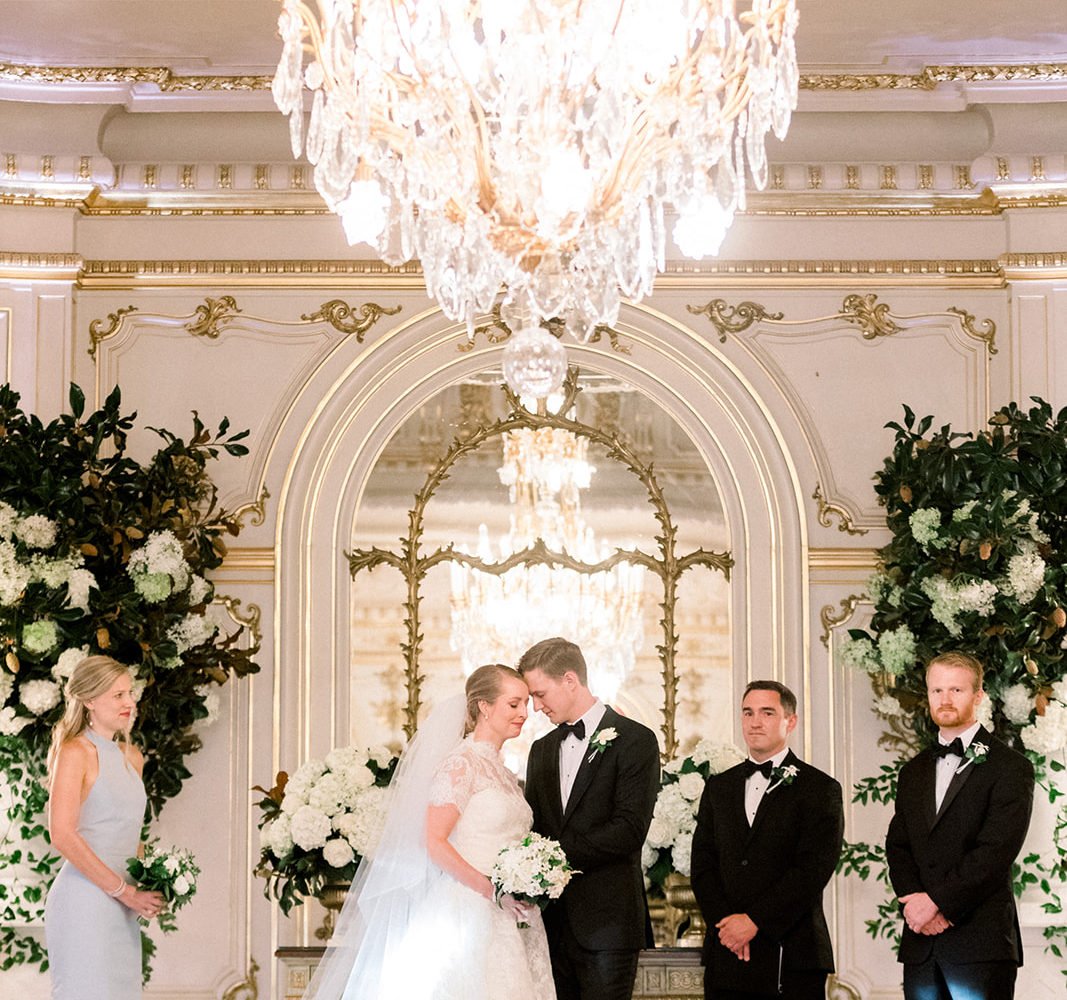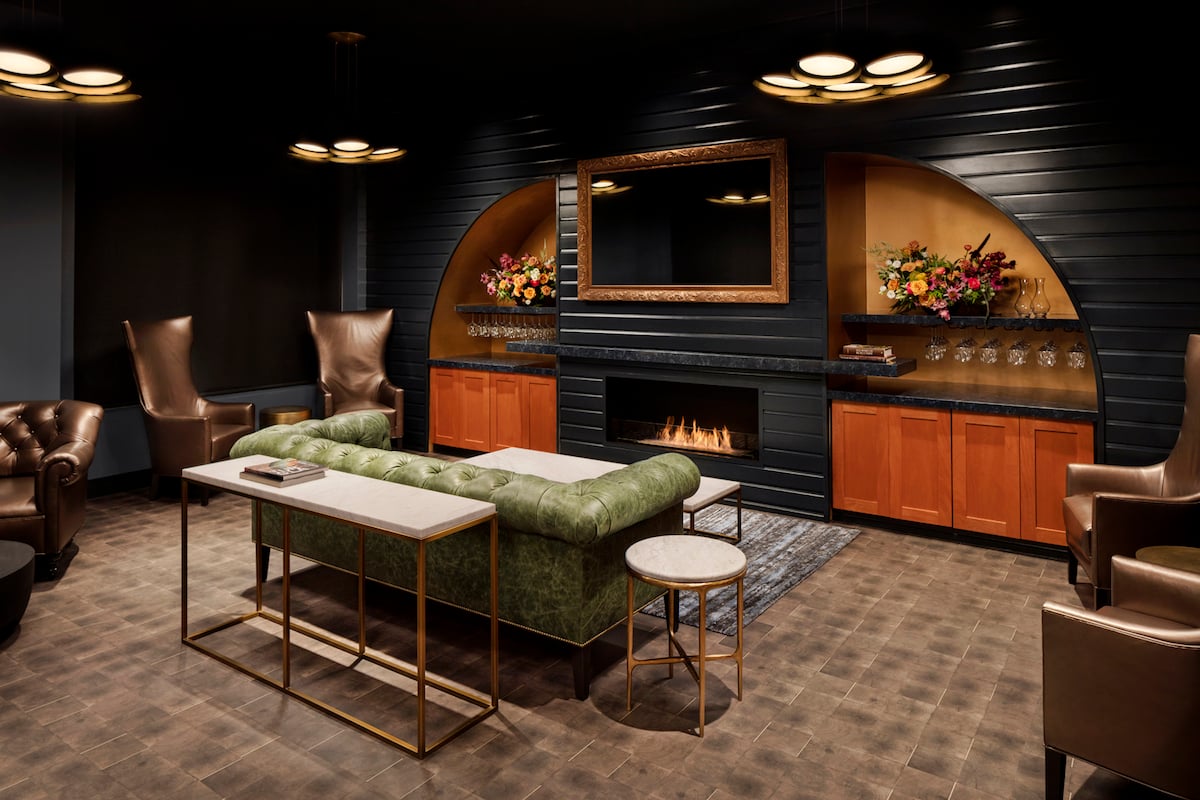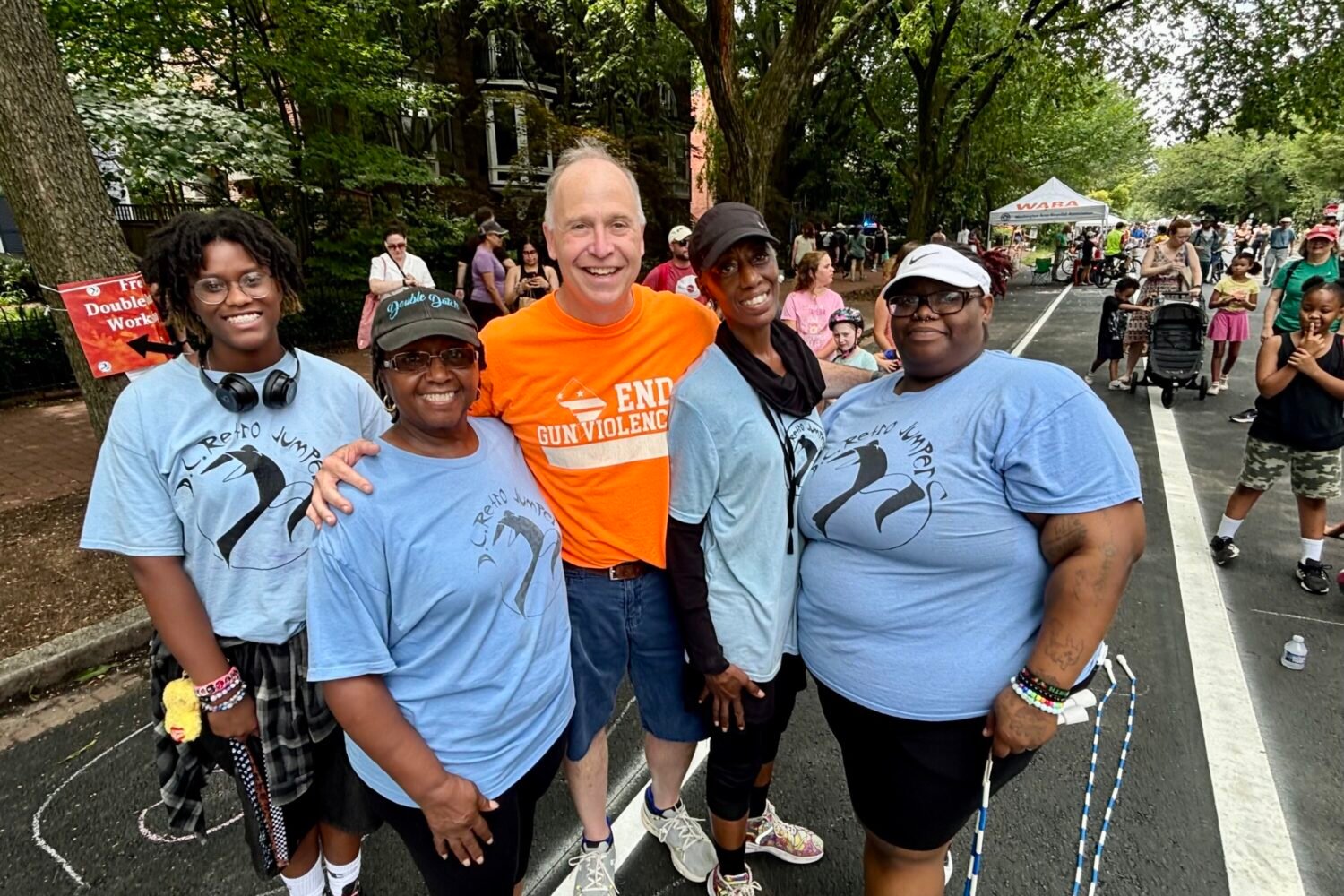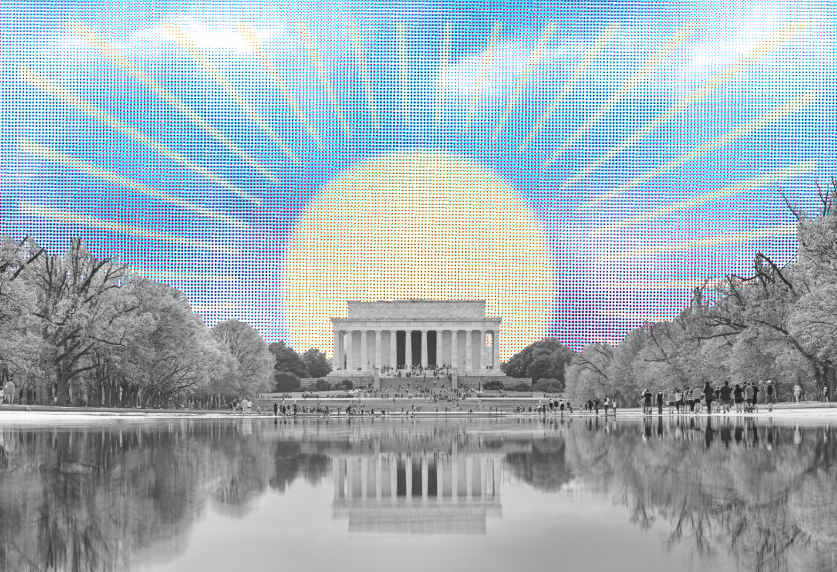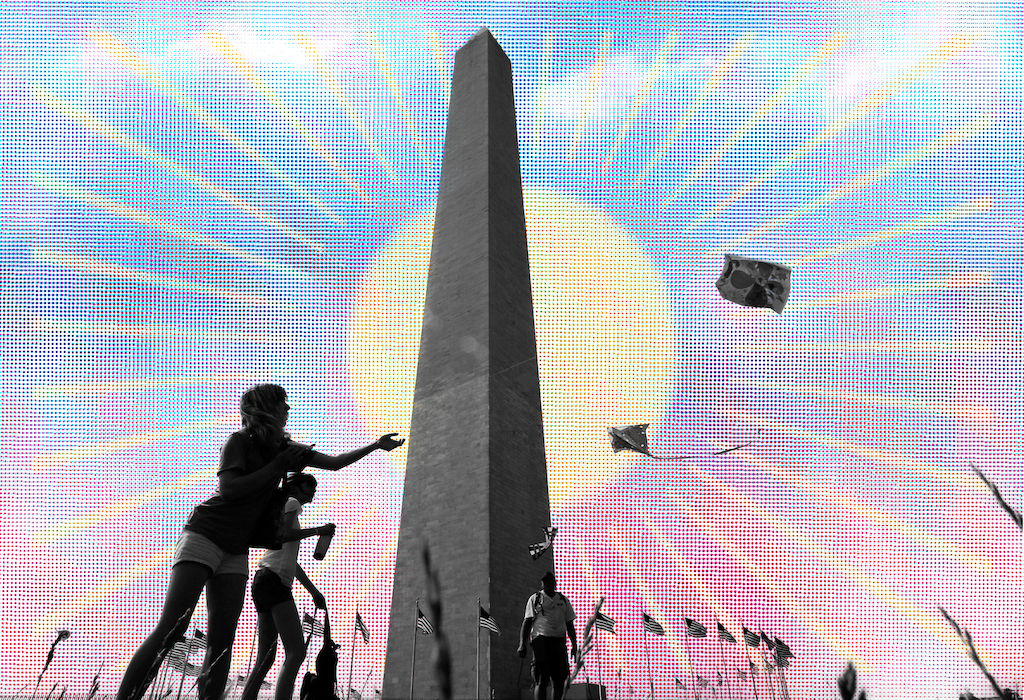As I waited for the wood-paneled elevators to lift me up to the recently opened Ned’s Club near the White House, two photographs of women commanded my attention: Jane Fonda sprawls on an armchair in one, while Betye Saar, the printmaker and assemblage artist, stares out in the other. “They’re a twist on the classical portraits you might see in a private members’ club of some old guys,” Kate Bryan, chief art director at Ned’s, told me when I visited. “Instead, you’ve got these two really strong, powerful women.”
The large Catherine Opie photos—among dozens of contemporary artworks displayed solely for a private audience of club members—are meant to send a signal: Sure, Ned’s may be an exclusive operation, but it isn’t a stuffy throwback.
The club’s marketing stresses that it’s a fun, youthful place. There’s live music seven nights a week, an Italian American restaurant led by José Andrés protégé David Testa, and of course, all that art—a curated collection of works by 47 women, along with a smattering of DC artists. (Ned’s is open to members of any gender; the name is a nod to Edwin Lutyens, the architect of the 1920s building that houses the London location.)
Executive director of membership and programming Joiwind Ronen was eager to distance Ned’s from the city’s old-fashioned private establishments, such as the Cosmos and Metropolitan clubs. “I think the age demographic is a big difference,” she said. “We’re going to be lively and playful.” Ronen noted that so far, about a third of members are under 40, a third are in their forties, and a third are over 50.
Whether that vibe is preferable to the fusty charms of the Cosmos Club—where the walls are lined with rows of the many members who’ve won Nobels and Pulitzers over the years—is a matter of personal preference, at least for the relatively few who could afford either. But Ned’s isn’t the only private club trying to cultivate a different crowd.
The post-pandemic years have ushered in a bunch of spots that target younger, cooler, more diverse Washingtonians. Chief (yes, it’s called Chief) lets in only high-ranking corporate women. The House at 1229, located in a Dupont Circle mansion, is somewhere between a club and a civic organization for accomplished women. Penn Quarter’s HQ DC House is a loungey penthouse founded last year by two brothers who left the corporate world to create what they describe as a safe space for Black professionals. The Gathering Spot, open since 2021, is another private networking club geared toward Black members.
Ned’s Club is the newest of these, and also the flashiest. It’s an offshoot of the international Soho House chain, which helped launch the modern private-club boom more than two decades ago. Ned’s is a separate enterprise from the same owners, with other locations in London, New York, and Doha. The DC outpost’s membership fees are around $5,000 a year.
The newest Ned’s Club occupies the top floor of the Milken Institute, an economic-think-tank-and-museum complex in the works from philanthropist (and famous white-collar criminal) Michael Milken. The financier—who was convicted of racketeering and securities-fraud charges but pardoned by Trump in 2020—partnered with the majority owner of Soho House, grocery magnate Ronald Burkle, to install the high-end club on the upper floors of the historic Art Deco building that once housed Riggs Bank’s offices. If that pair of septuagenarian white dudes seem like an odd fit for a club positioning itself as female-forward and less gray-haired, the business doesn’t seem to be hurting. Ned’s has capped membership at 1,000; according to the club, there’s already a waitlist.
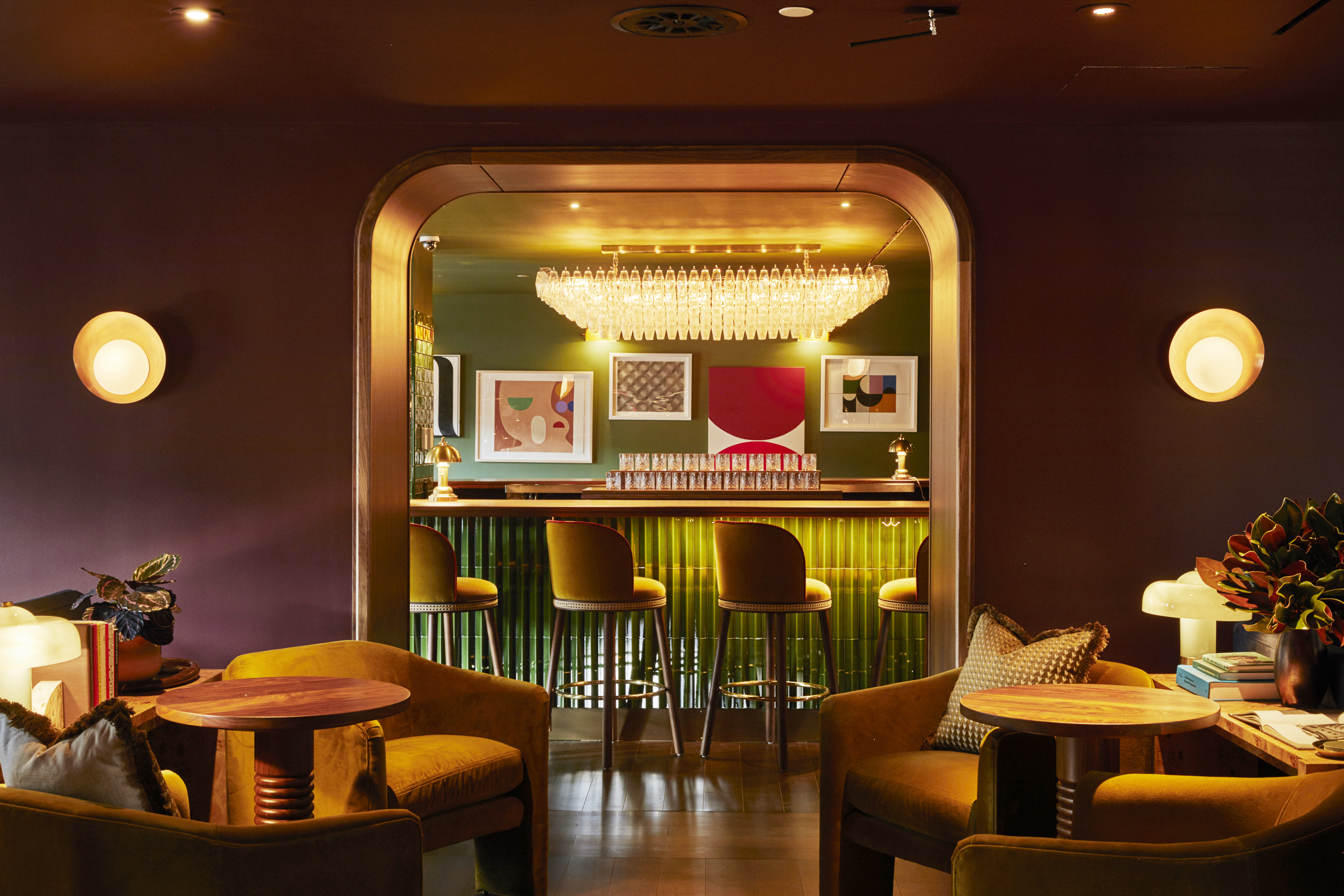
One recent afternoon, I dropped by Chief, where three well-dressed women sat tapping on their laptops, working alone in separate corners of the quiet, slightly overheated room. There were neat stacks of books about art (a Georgia O’Keeffe exhibition catalog) and local themes (The Row House in Washington, DC). A fancy Italian espresso machine hummed away atop an emerald-green bar.
The interior of Chief feels less luxurious than Ned’s Club—more like the lobby of a fairly trendy hotel, with hunter-green and plum walls and jewel-toned furniture. Yet in some ways it’s significantly more exclusive. For one thing, it’s open only to people who identify as women (or nonbinary or gender-nonconforming). And the club—a venture-capital-backed for-profit business that launched in New York in 2019—requires members to be at the “senior executive” level: vice presidents or C-suite execs at sizable companies. “There’s always a big difference between a VP at a two-person company versus a VP at Google,” explains founder Carolyn Childers, who previously held high-level positions at companies including Soap.com and Handy.
The DC branch has members who work at Accenture, LVMH, Morgan Stanley, the World Bank, and other prominent institutions, according to the club. Membership starts at $5,900 annually, with a higher tier that costs almost $8,000 and comes with a range of benefits including extra mentorship from professional coaches. It’s used for coworking and networking along with socializing—professional advancement is a major theme.
DC is Chief’s smallest and newest location (there are currently five other outposts in places like Chicago and San Francisco), but it still has more than 800 members. Access is tightly controlled: Clubhouse manager Rebecca Cho told me visitors aren’t allowed in unless they’re accompanied by a member, even if the guest has already been admitted and has just stepped outside for a call. (Men are permitted as guests.) Exclusivity is one of the main selling points.
I couldn’t imagine why executives would shell out for what struck me as a glorified WeWork.
“The way I have always thought about it, we are a vetted organization,” Childers told me when I asked about why admission standards are so stringent. “In order for us to create value for our members, we have to be vetted.” Yet once inside this exclusive space, I couldn’t imagine why even well-paid executives would shell out so much for what struck me as a glorified WeWork.
And while the skepticism of a visiting journalist isn’t surprising, some of Chief’s own members have criticized it. In 2023, a group of executive women, many of whom were leaving the club, told the New York Times they were disillusioned with the place, which they said offers inane girlboss messaging while dodging important political issues like the Supreme Court’s Dobbs decision. One member accused Chief of not paying enough attention to applicants of color. Childers responded that retention rates for women of color were higher than those for white women. But as she told the Times, “We’re also not a social activism organization.” [After this story was published, a Chief spokesperson added that in the two years since the Times story ran, “we have made significant investments in the Chief experience to improve how we serve all women who are a part of our community. Inclusivity is a constant area of focus for our organization.”]
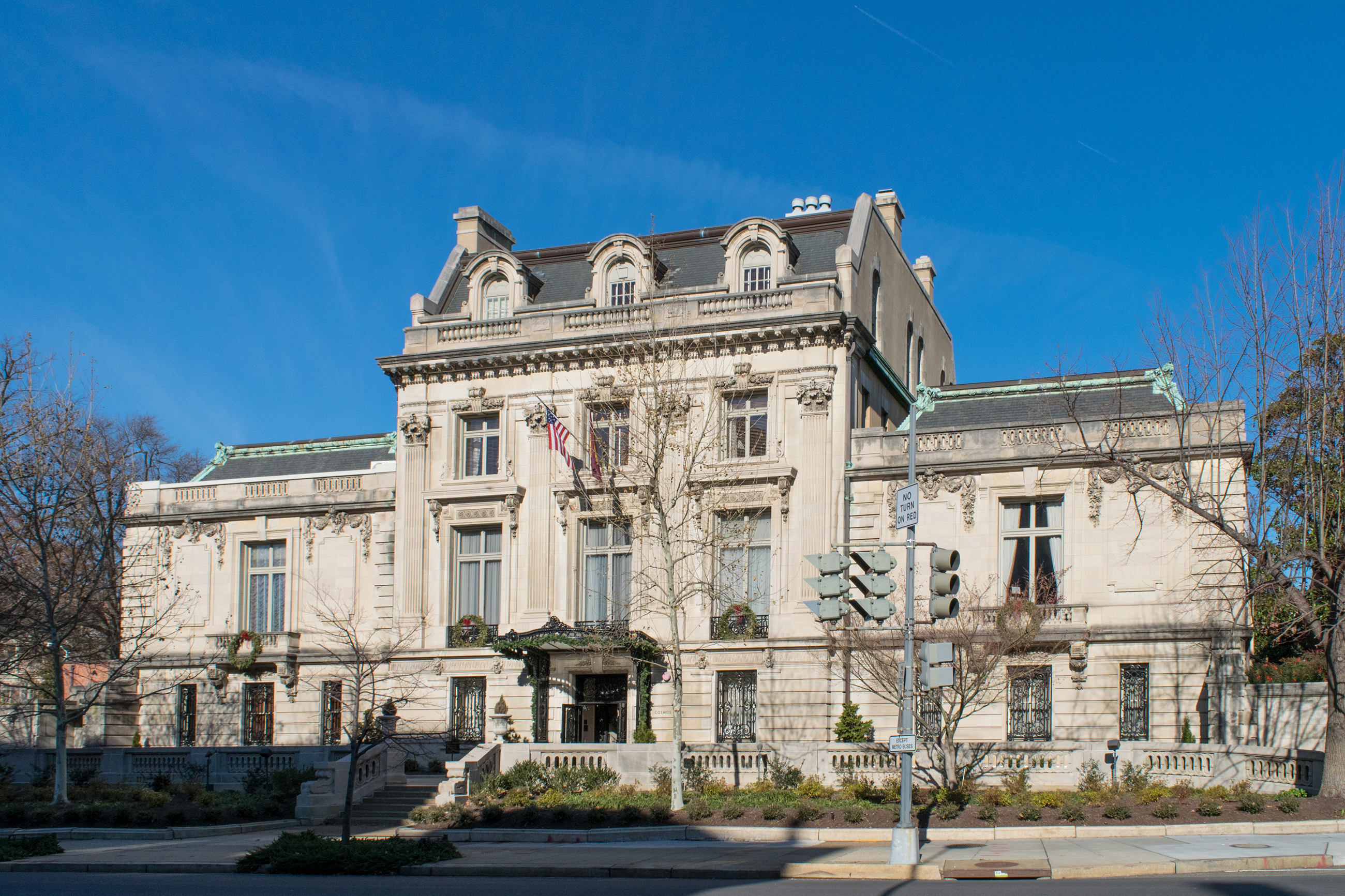
To get a sense of what this new generation of private clubs serves as an alternative to, I decided to get a similar tour of the Cosmos Club. Founded by early members of the National Geographic Society in 1878, the institution developed a reputation as the home of the brainiest of the private-club set in town. You’ve likely noticed the ornate Beaux Arts mansion on Massachusetts Avenue even if you didn’t know what it was.
Along with the Metropolitan, the Georgetown, the University, and the Sulgrave, the Cosmos is a clubhouse for establishment DC, with a reputation for being rather geriatric. The place is highly private, though it does show up occasionally in the news: When Ketanji Brown Jackson was nominated to the Supreme Court in 2022, Republicans disparagingly brought up her membership. (The criticism never got much traction.)
The Cosmos Club’s facilities are luxe but comfortable, and the scientific orientation (hence the name) gives it an intellectual air; lectures by prominent thinkers are a core part of its offerings, along with a restaurant, ballroom, library, billiards room, and private garden. Unlike the new crop of private clubs, the Cosmos has a strictly enforced dress code, and men are required to wear jackets and ties at certain times.
Member rolls are private, but over the years, the Cosmos Club has admitted cabinet secretaries, diplomats, scientists, economists, academics, military bigwigs, and Supreme Court justices, along with Presidents Taft, Hoover, and Wilson. It’s the kind of place with a wall dedicated to members who’ve been featured on postage stamps. It’s also the sort that for many years refused membership to women and various minority groups. It didn’t admit a Black member until 1962, and women weren’t allowed until 1988.
A nonprofit operation, the Cosmos doesn’t court publicity the way the new generation of for-profit outfits clearly do. (Ned’s Club has hired one of DC’s most prominent PR firms to drum up press attention.) As a result, the club declined to discuss membership numbers or trends. But current members report that the place remains lively, and events seem well attended.
We’ll have to take their word for it: When I reached out through a public email address to see if I could swing by, general manager Mitchell Platt responded just seven minutes later. “Thank you for your email,” he wrote. “One of Cosmos Club’s core principles is that privacy is valued. This will preclude our participation in your article.”
This article appears in the February 2025 issue of Washingtonian.
Correction and clarification: The New York Times story on Chief ran in 2023, not last year. A response from Chief to that story has been added above.

